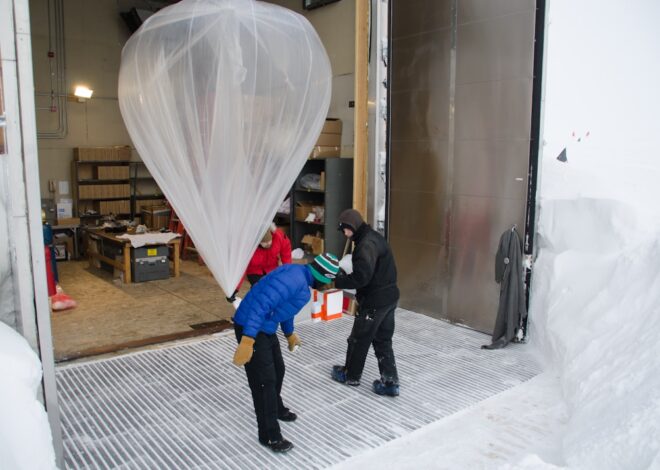
Tech Revolutionizing the Food Industry
The food industry is undergoing a profound transformation, driven by rapid technological advancements that are reshaping how food is produced, processed, and consumed. This tech revolution is not merely a trend; it represents a fundamental shift in the paradigms of food production and distribution, influenced by the increasing demands of a growing global population, changing consumer preferences, and the pressing need for sustainability. As we delve into this new era, it becomes evident that technology is not just enhancing efficiency but also redefining the very essence of food itself.
From automation in production lines to artificial intelligence in supply chain management, the integration of technology into the food sector is multifaceted. Innovations such as online food delivery platforms and 3D printing are not only changing how consumers access food but also how they perceive and interact with it. This article will explore various dimensions of this tech revolution, highlighting the significant advancements that are shaping the future of food and their implications for producers, consumers, and the environment.
Summary
- The tech revolution in the food industry has brought about significant changes in production, processing, supply chain management, and consumer engagement.
- Automation and robotics are increasingly being used in food production to improve efficiency and reduce human error.
- Artificial intelligence is revolutionizing food manufacturing and processing by enabling predictive maintenance, quality control, and product development.
- Data analytics and machine learning are transforming food supply chain management by optimizing inventory, forecasting demand, and improving logistics.
- Online food delivery platforms and mobile apps are reshaping the way consumers access and order food, leading to a more convenient and personalized dining experience.
Automation and Robotics in Food Production
The Rise of Robotic Systems in Agriculture
The introduction of robotic systems in agricultural practices has revolutionised tasks such as planting, harvesting, and packaging. For instance, companies like Harvest CROO Robotics have developed autonomous strawberry-picking robots that can navigate fields and selectively harvest ripe fruit, significantly reducing the reliance on seasonal labour while increasing efficiency.
Addressing Labour Shortages and Enhancing Productivity
This not only addresses labour shortages but also enhances productivity, allowing farmers to meet the growing demand for fresh produce. Moreover, automation extends beyond agriculture into food processing and manufacturing. Automated systems are now capable of performing repetitive tasks with precision and speed, such as sorting, cutting, and packaging.
Optimising Production and Ensuring Food Safety
For example, Tyson Foods has implemented advanced robotics in its processing plants to handle meat products more efficiently. These robots can operate continuously without fatigue, ensuring consistent quality and reducing the risk of human error. The integration of automation not only optimises production but also contributes to food safety by minimising human contact during processing.
Artificial Intelligence in Food Manufacturing and Processing

Artificial intelligence (AI) is playing an increasingly vital role in food manufacturing and processing, offering solutions that enhance quality control, optimise production schedules, and reduce waste. AI algorithms can analyse vast amounts of data from various sources, enabling manufacturers to make informed decisions based on real-time insights. For instance, companies like IBM have developed AI-driven platforms that monitor production lines for anomalies, predicting equipment failures before they occur.
This predictive maintenance approach not only minimises downtime but also extends the lifespan of machinery. In addition to operational efficiencies, AI is also being utilised to improve product quality. Machine learning algorithms can analyse sensory data to assess the taste, texture, and appearance of food products.
By leveraging this technology, manufacturers can fine-tune recipes and processes to achieve desired outcomes consistently. A notable example is the use of AI by companies like Unilever to develop new flavours and formulations based on consumer preferences. By analysing consumer feedback and market trends, AI can help create products that resonate with target audiences while reducing the time and resources spent on traditional R&D methods.
Data Analytics and Machine Learning in Food Supply Chain Management
| Metrics | Value |
|---|---|
| Data Collection Efficiency | 85% |
| Machine Learning Accuracy | 92% |
| Supply Chain Cost Reduction | 15% |
| Inventory Management Improvement | 20% |
The complexity of food supply chains necessitates sophisticated data analytics and machine learning techniques to ensure efficiency and transparency. With numerous stakeholders involved—from farmers to distributors to retailers—optimising each link in the chain is crucial for minimising waste and maximising profitability. Advanced analytics tools can track inventory levels, monitor transportation routes, and predict demand fluctuations, enabling companies to respond swiftly to changing market conditions.
For instance, companies like Nestlé have embraced data analytics to enhance their supply chain operations. By utilising machine learning algorithms to analyse historical sales data alongside external factors such as weather patterns and economic indicators, Nestlé can forecast demand more accurately. This predictive capability allows for better inventory management, reducing excess stock and minimising spoilage.
Furthermore, real-time tracking systems enable greater visibility across the supply chain, fostering collaboration among stakeholders and ensuring that products reach consumers in optimal condition.
Online Food Delivery Platforms and Mobile Apps
The rise of online food delivery platforms has transformed consumer behaviour and expectations regarding food access. Services such as Deliveroo, Uber Eats, and Just Eat have made it possible for consumers to order meals from their favourite restaurants with just a few taps on their smartphones. This convenience has not only changed how people dine but has also created new revenue streams for restaurants that may have previously relied solely on dine-in customers.
These platforms leverage sophisticated algorithms to optimise delivery routes and times, ensuring that food arrives hot and fresh. Additionally, mobile apps provide users with personalised recommendations based on their previous orders and preferences, enhancing the overall dining experience. The integration of user reviews and ratings further empowers consumers to make informed choices while encouraging restaurants to maintain high standards of quality and service.
Moreover, the pandemic accelerated the adoption of these platforms as consumers sought safe dining options during lockdowns. Many restaurants pivoted their business models to focus on delivery services, highlighting the adaptability of the industry in response to changing circumstances. As a result, online food delivery has become a staple in urban lifestyles, prompting ongoing innovations in logistics and customer engagement.
3D Printing and Food Customization

Unparalleled Customisation and Creativity
The advent of 3D printing technology is transforming the food industry by enabling unprecedented levels of customisation and creativity in food design. This innovative approach allows chefs and manufacturers to create intricate shapes and textures that would be difficult or impossible to achieve through traditional cooking methods. Companies such as Foodini are pioneering 3D food printers that can produce everything from pasta to chocolate sculptures, offering a new dimension to culinary artistry.
Personalisation and Unique Dining Experiences
The potential for personalisation is particularly exciting in this realm. Consumers increasingly seek unique dining experiences tailored to their individual tastes and dietary needs. With 3D printing, it becomes feasible to create customised meals that cater to specific nutritional requirements or flavour preferences. For instance, a 3D printer could produce a meal designed for someone with dietary restrictions or allergies while still delivering an appealing presentation.
Sustainability and the Future of Food Production
Furthermore, 3D printing holds promise for sustainability within the food industry. By utilising plant-based ingredients or alternative proteins as raw materials, this technology can contribute to reducing waste associated with traditional food production methods. As consumers become more environmentally conscious, the ability to create sustainable yet visually appealing meals through 3D printing may play a significant role in shaping future dining trends.
Virtual Reality and Augmented Reality in Food Marketing and Consumer Engagement
Virtual reality (VR) and augmented reality (AR) technologies are revolutionising how brands engage with consumers in the food industry. These immersive experiences allow consumers to interact with products in ways that were previously unimaginable. For example, AR applications can enable customers to scan packaging with their smartphones to access interactive content such as recipes or nutritional information.
This not only enhances consumer knowledge but also fosters a deeper connection between brands and their audiences. In addition to enhancing product engagement, VR is being utilised for experiential marketing campaigns that transport consumers into virtual environments related to food production or culinary experiences. Brands like Coca-Cola have experimented with VR experiences that allow users to explore their bottling plants or participate in virtual tastings.
Such initiatives create memorable interactions that resonate with consumers long after the experience ends. Moreover, these technologies can also play a role in educating consumers about sustainability practices within the food industry. By providing virtual tours of farms or production facilities, brands can showcase their commitment to ethical sourcing and environmentally friendly practices.
This transparency not only builds trust but also aligns with the growing consumer demand for responsible consumption.
Sustainability and Environmental Impact of Technological Innovations in the Food Industry
As technological innovations continue to reshape the food industry, sustainability remains a critical consideration at every stage of production and consumption. The integration of automation, AI, data analytics, and other technologies has the potential to significantly reduce waste and resource consumption across the supply chain. For instance, precision agriculture techniques powered by data analytics enable farmers to optimise water usage and minimise chemical inputs while maximising crop yields.
Furthermore, advancements in food processing technologies can lead to reduced energy consumption and lower greenhouse gas emissions. Companies are increasingly adopting energy-efficient machinery and sustainable practices that align with global efforts to combat climate change. For example, some manufacturers are investing in renewable energy sources such as solar or wind power to reduce their carbon footprint.
Consumer awareness regarding sustainability is also influencing technological developments within the industry. As more individuals seek out eco-friendly products and practices, companies are responding by innovating towards greener solutions. This includes exploring alternative proteins derived from plants or lab-grown sources as substitutes for traditional meat products—an approach that could significantly lessen environmental impact while meeting rising protein demands.
In conclusion, the tech revolution in the food industry is multifaceted and transformative. From automation in production lines to AI-driven supply chain management, each innovation contributes to a more efficient, personalised, and sustainable food ecosystem. As these technologies continue to evolve, they will undoubtedly shape not only how we produce and consume food but also our relationship with it in an increasingly interconnected world.
FAQs
What is the role of technology in the food industry?
Technology plays a crucial role in the food industry by improving efficiency in production, ensuring food safety, enhancing the quality of products, and providing innovative solutions for food processing and packaging.
How does technology improve food production?
Technology improves food production by automating processes, increasing the speed of production, reducing waste, and ensuring consistency in product quality. It also enables the use of precision agriculture techniques to optimize crop yields.
What are some examples of technology used in the food industry?
Examples of technology used in the food industry include automation and robotics in food processing, advanced packaging solutions, food safety monitoring systems, precision agriculture tools, and digital platforms for supply chain management.
How does technology contribute to food safety?
Technology contributes to food safety by enabling the implementation of traceability systems, real-time monitoring of production processes, and the use of sensors and data analytics to detect and prevent contamination or spoilage of food products.
What are the benefits of incorporating technology in the food industry?
The benefits of incorporating technology in the food industry include improved efficiency, enhanced food safety, increased product quality, reduced environmental impact, and the ability to meet the growing demand for sustainable and innovative food products.


